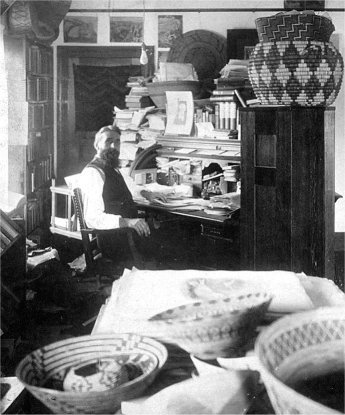Yosemite > Library >
Vacation >
“Basket Makers” (1901) by George Wharton James
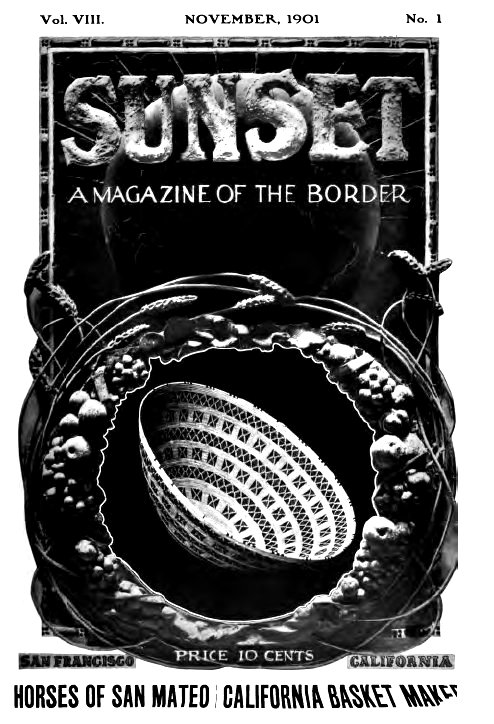
Cover, Sunset (November 1901)
|
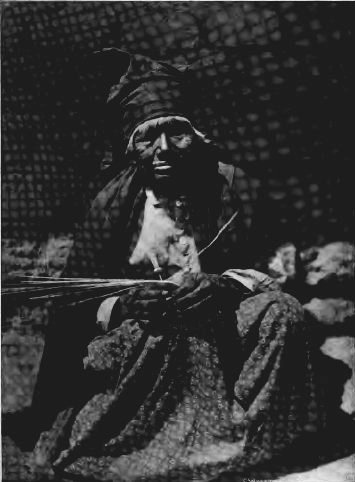
MARIA ANTONIA, ONE OF THE MOST EXPERT OF THE CAHUILLA, CALIFORNIA, BASKET-MAKERS. WHEN THE
PHOTOGRAPH WAS TAKEN SHE WAS JUST BEGINNING AN ELABORATE BASKET. CAHUILLA HAS BEEN MADE
FAMOUS BY THE REFERENCE TO IT IN MRS. HELEN HUNT JACKSON’S “RAMONA.”
|
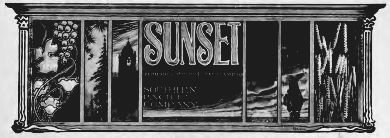
|
|
Vol. VII
|
November, 1901
|
No. 1.
|
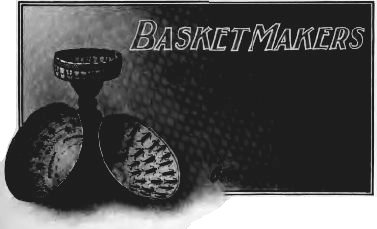
Illustrated from photographs by the author.
Three exquisitely woven baskets in
the Plimpton Collection, San Diego
|
Basketry
is a primitive art.
It is found among all primitive
peoples in some form. or other,
and in the remains of the most ancient
people. From the tombs of Egypt
baskets have been taken, made at the
time when Moses and Aaron appeared
at the court of Pharaoh, or even before Abraham became a wanderer on
the plains of Kadesh and Shur. The
earliest visitors to Asia found basketry,
and when the Columbian discoveries opened up the new world of
America, every tribe was found to
have its expert, basket-makers, from
the farthest region in the south to
the highest point reached in the
north. And it was not an art found
in a rude and primitive state. It was
highly developed, and, indeed, was
then in its days of glory—a glory
never since surpassed and seldom
equaled.
To the Californian it must ever be a
fact of great interest that nowhere in
the world was the art of basket-making carried on with greater skill
and success than in his own state.
From north to south the native Californians were all more or less expert
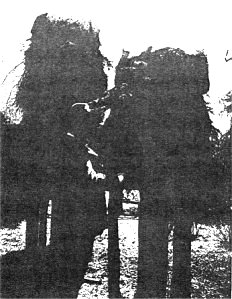
YOSEMITE INDIAN’S ACORN STOREHOUSE
|
basket-makers. The Pomas in the
north were equally proficient with
the Palatingwas in the south, and,
though it must be confessed that the
art of basketry is on the decline, it is not less certain that
the California Indian of today
holds a very high position
among the existing basket-making peoples of the world.
It is not my purpose in this
short article to present a comprehensive survey of the whole
field occupied by the California
basket-maker. I have neither
the knowledge nor the ability
to do this. Of one tribe alone,
the Pomas, Dr. J. W. Hudson,
of Ukiah, has written, with a
wealth of knowledge and
research that has never before
or since been equaled by any
other writer about the basketry
of ally other people. I merely
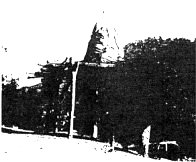
MONO INDIAN’s ACORN CACHE, USUALLY ERECTED IN FRONT OF
THE CABIN DOOR
|
propose to conduct
the reader, in an easy
and chatty kind of
way, to several basket-making peoples
of California, that he
may see them at their
work, learn a few
characteristics of special kinds of weaving, and gain a little
deeper insight into
what basket-weaving
used to mean, and
still does, to some of
those who are engaged in it.
In the Yosemite
valley, even under
the very shadow of
Sentinel Rock and
within reach of the
music of the great
Yosemite falls, two or
three camps of basket-making Indians
may often be found.
And yet they are not
Yosemite Indians.
There is a small,
scattered remnant of
the once great and
powerful Yo-ham-i-ti
tribe still in existence,
but its members are generally to be
found near Cold springs and at Wawona, rather than in the world-famed
valley to which they have given their
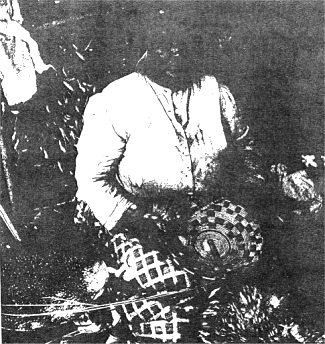
MERCED NOLASQUEZ OF AGUA CALIENTE, MOTHER OF THE PRESENT CAPITAN OF AGUA CALIENTE INDIANS
|
name. The Yosemite Indians of today are generally either Paiutis or
Monos, and both tribes are excellent
basket-makers.
A small but interesting collection of
baskets may be found in the valley,
at the photographic studio of Mr. J. T.
Boysen, and I have no doubt he will
gladly show it to visitors who proffer
a request to him.
Not far away from the foot of Yosemite falls is an Indian camp, and
there I found three acorn caches.
They are perched upon stilts and are
of rude basket-work, an opening being
left near the bottom through which
the store can easily be reached.
When I made my trip to the Monos,
before described in the pages of Sunset, I found there an acorn cache of
different construction. It was perched
on stilts, as were the Yosemite ones,
but these supported a rude platform
of crossed logs, on which the cache
proper rested. It is a pyramidal
structure and was erected in front of
the cottage door, so that it could be
constantly watched. Like the Yosemite caches, it is of rudely twined
twigs, but this, when full, was covered over with canvas, so as to protect it completely from the weather.
Further south than the Monos is
the Tule River reservation. Here I
found many expert weavers and discovered several interesting facts. We
speak of Tulare, Yokut, Paiuti, Fort
Tejon and Mono baskets as distinct
species of weave. I am inclined to
doubt whether any person can distinguish between them, unless he has
personally purchased from the weaver
and learned from her. to which tribe
she belongs. For here on the reservation are people of all these names.
The original stock that once inhabited
all this region, from the Fresno river
as far south as Fort Tejon, was the
Yokut. They were divided into a
number of clans, many of which are
named by Powers in his “Tribes of
California,” and several of which he
never knew. I found, among others,
the Yo-er-kal-is, Yo-el-man-is and Wi-chum-nas,
together with Paiutis.
Now, the intrusion of the Paiutis
(whose original habitat is Nevada)
into this region offers a most interesting
and fascinating field for meditation.
Why came they hither? They
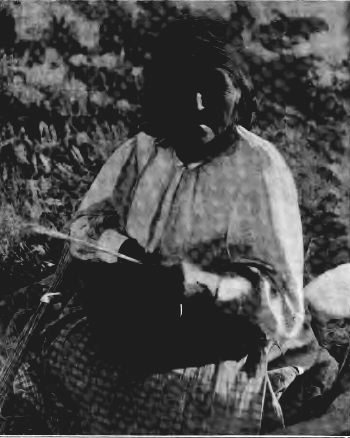
STUDY OF A TYPICAL BASKET-MAKER OF CAHUILLA
|
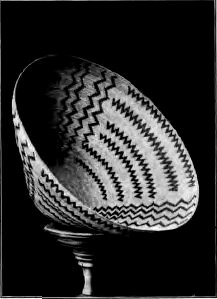
TULARE BASKET IN PLIMPTON COLLECTION, SAN DIEGO
The zigzag line represents lightning, the meanderings of a stream,
or the barbs of a Yucca palm.
|
themselves give the answer.
Living, as they did, on the
alkali plains of Nevada, subject to drought and consequent starvation, the struggle
for existence became too
great. Their hardships did
not prevent their multiplying
in great numbers, and soon
they were forced to “expand.” Whither should they
go? Eastward, where tribes
were similarly situated as
themselves, or westward,
where the game-haunted
summits and slopes of the
California mountains, the
fish-stocked streams of the
lower slopes, the fertile grass
and shrub-covered foothills
and valleys, and the herds
of deer and antelope that
roamed the plains assured
them a livelihood far superior
to any they had ever before
enjoyed? There were not
many passes, but with these
they were more or less familiar: Bloody canyon, Walker,
El Cajon. These afforded
the opportunity. Stealthily
they laid their plans, and
when time was ripe they forced their
way over the summits and completely
split the once powerful Yokut nation
in two. They took possession of
Kings river, Kern river, Kern lake
and Poso creek, and, though efforts
were now and again made to drive
them out, they found the land too
great a “land of promise,” a “land
flowing with milk and honey,” to
abdicate their joys. If they left, it
must be by force, and that the Yokuts could not apply with sufficient
convincement to be successful. Thus,
in a few years the singular spectacle
was found of this once great nation
split apart by the alien Paiutis, who,
from that day until they succumbed
to the vices taught them by the
whites, held securely to the territory
they had gained. The baskets of each
are almost alike in design and so
absolutely the same in weave, that no
person, however expert, could possibly tell which was Paiuti and which
Yokut.
ILLUSTRATED FROM PHOTOGRAPHS BY THE AUTHOR
Three exquisitely woven baskets in
the Plimpton collection, San Diego,
(see illustrated title of this article)
reveal the various modes of presenting the human figure. The basket,
oval in shape, shown in an accompanying
picture, was made by a Wichumna of the Yokut tribe. She was
living in one of the upper reaches of
Kings river, in Kern county. Here
the figures are those of dancers, holding hands, some wearing feather kilts.
This undoubtedly represents a
“big dance”—something the weaver desired
to celebrate and keep in memory, as the kilted figures are possibly
those of shamans, many of whom were
present. The crosses were copied
from the pictured rocks of the locality, and, taken- in conjunction with
the great dance, the presence of so
many kilted shamans or medicine men,
and the explanation given that these
crosses represent battles, I assume
that this its the memorial basket made
by a woman who witnessed the dances
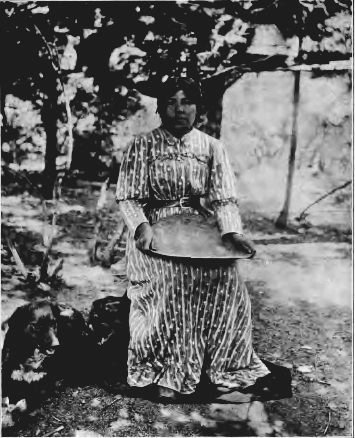
MONO MAIDEN BASKET-MAKER IN THE YOSEMITE VALLEY
|
held in honor of certain decisive victories won by her people.
Above the dancers is the diamond-back rattlesnake pattern, beautifully
woven. The basket to the left in the
picture is by a Tulare weaver, and
shows the general method followed by
this people to represent the human
figure. In the border above the figures is the rattlesnake pattern divided
into segments, and thus making a kind
of St. Andrew’s cross, which has led
some people to interpret the sign as
proof that these Indians have been
subject to Christian influences. This
is an error, at least so far as this design is concerned. It is a manifestation of the fact that makers do not
always slavishly adhere to any set
design, and that by and by there results a loss of the distinctively imitative pattern and the gain of a
conventionalized form that, by successive mutations, may lose all resemblance to the original.
One old weaver to whom I showed
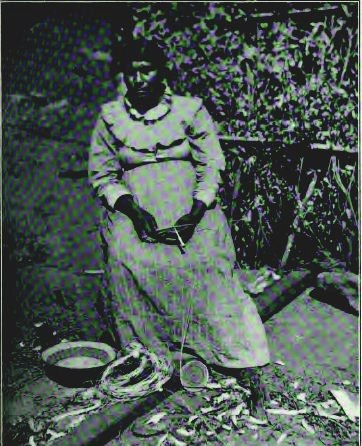
PAIUTI EXPERT AT TULE RIVER RESERVATION
The basket designs of Yokut and Painti Indians are practically the same
|
this design informed me that the
rattlesnake pattern was originally
incorporated into baskets, by ancestors,
as a propitiatory offering to the snake.
‘Prayers were said asking immunity
from danger for themselves and families from the reptile’s deadly bite.
In the course of time the diamonds of
the design were cut in half and placed
upon the baskets in the form of a St.
Andrew’s cross. The identity of this
cross with the rattlesnake design
would be apparent to no one, and if
the inquirer were to ask of an Indian
what it meant, and he were to be told
that it was a prayer to the rattlesnake,
asking him not to bite the weaver, the
answer would seem to be far-fetched
and strange. Yet a study of the
growth of the design and the mutations through which it has passed,
renders its symbolic meaning clear.
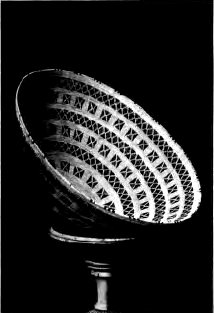
TULARE BASKET IN PLIMPTON COLLECTION, SAN DIEGO
Here the origin of the St. Andrew’s cross is believed to be shown
|
The basket to the right in this picture is an old Inyo county basket,
purchased in Lone Pine from a Paiuti
woman by Mr. A. W. de la Cour Carroll,
an enthusiastic basketry collector,
who has secured some choice specimens. It shows the oldest type of
human figure known to these Indians,
and offers a singular contrast to both
the other designs.
Another picture shows several fine
“Tulare” baskets in the Plimpton collection. In color, weave and design
they are equally delightful to the expert. In one the origin of the
St. Andrew’s cross is clearly and beautifully shown, as it is apparent to the
most casual observer that the single
crosses of the second, fourth and sixth
rotes of designs from the top are but
the diamonds of the first, third and
fifth rows cut in half at their points.
The design on another represents
watercourses, with quail, and the W-like design
in the upper part
of one of the watercourses
is said to represent a spring.
Another basket shown may
represent three different
things, and, as no interpretation was obtained from the
original weaver, the reader
may make his own choice.
With some weavers the zigzag line represents lightning,
with others a conventionalized representation of the
meandering of a stream, and
with still others the pointed
barbs of the yucca or Spanish
dagger.
At Cahuilla, made memorable by Helen Hunt Jackson
in her fascinating “Ramona,”
there are a number of skilled
basket-makers: Marie Los Angeles, Felipa Akwaka, Rosario Casero, Maria Antonia
and several others. Their
ware is not as fine as that of
the Yokuts, though it is
somewhat in the same style.
Maria Antonia beginning
work on a basket is shown
in one of the photographs.
The inner grass of the coil
is called “su-lim,” and is
akin to our broom corn in
appearance. The coil is made by wrapping with the outer husk of the stalk
of the squawweed and skunkweed,
and the root of the tule, the two
former being termed “se-e-let” and
the latter “se-el.”
The only colors used are black,
brown, yellow and white. The white,
yellow and brown are colors natural
to the growth and are neither bleached
nor dyed. The black is made by taking a potful of mud from the sulphur
springs that abound in the reservation
and boiling it, stirring the mud and
water together. As the mud settles
the liquid is poured off, and, while
hot, is used to color the splints. Two
or three “soakings” are necessary to
give the fast and perfect color. The
brown is the natural color of the tule
root. The outer coating is peeled off
into splints never longer than ten
inches, but generally nearer six or
seven. It is a common sight to find a
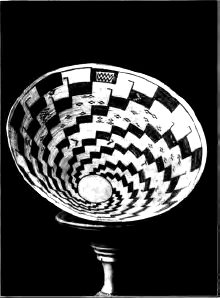
TULARE BASSET IN PLIMPTON COLLECTION
The design represents water courses with quail
|
number of these splints hung
up in the humble kishes,”
or tule or willow huts of the
Cahuillas.
A number of baskets of
these people are here shown,
and some from other villages
of the vicinity. They are
mainly in the collection of
Dr. C. C. Wainright, the
physician of the Tule River
and Mission Indian Agency.
A few of the baskets are
mine. The one to the extreme right of the bottom
row in this picture was made
by Juana Apapos, at Saboba,
near San Jacinto, and yet it
represents mountains and
valleys — conventionalized,
of course—of the region
round about Cahuilla. The
mountain peaks are represented by the higher portion
of the design and the valleys
by the depressions. It will
be noticed that black splints
are worked into the valleys.
These represent the soil, and
the small white spot underneath the soil shows the
water sources— the springs.
Above the valleys are two large
black triangles, united. When I asked
Juana what these represented she was
a long time in answering. She was
afraid I would laugh at her, and, with
an Indian’s sensitiveness to ridicule,
she positively refused to tell me. But
when I finally satisfied her that I
would not laugh, she said they represented trees. When she began the
design she soon saw that they would
come out much too large, but she had
started and was resolved to finish
them as she had begun.
Human figures are seen in the basket to the left, in the bottom row, and
in the oval basket in the third row
from the bottom are conventionalized
arrow points. In the basket below
the one which bears the legend, ”1895 Basket,”
are flying geese, and in the
second basket from the left, in the top
row, is a representation of the tracks
of a worm. The second basket from
the left, in the second row from the
top, shows the rainbow, while the
second basket from the left, in the
bottom row, has the spider-web pattern
afterward to be referred to.
The conical carrying basket to the
right, in which Dr. Wainright’s little
boy insisted upon sitting while I made
the photograph, contains a design
that perfectly represents the poetic
conceptions of the Indian and her
methods of weaving them into her
basketry.
In another picture is reproduced an
interesting Cahuilla photograph. It
shows the Ka-wa-wohl or acorn mortar,
around the top of which a circular
piece of basketry is securely fastened
with pinon gum. This basketry acts
as a guard to keep the acorns from
flying out as the “ta-kish,” or
pounding stone, is brought down upon them.
It is laborious work, this whole process of making bread from acorns, for
everything has to be done without
any of the modern methods for saving
strength expenditure. Students of
the human face and hands will also
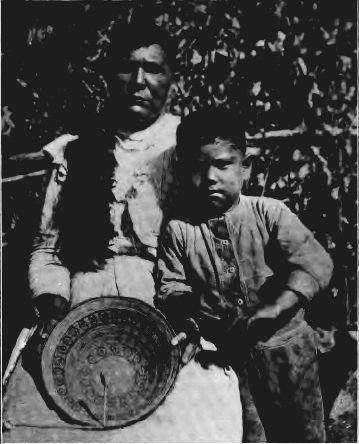
YOKUT WEAVER AND A FUTURE CHIEFTAIN
|
be much interested in those here
shown, especially the hands, for there
are characteristics in them that are
generally associated only with centuries of high breeding and culture.
Another Cahuilla weaver shown is
a keenly alert and intelligent woman,
Maria Los Angeles by name. She
lives in Durasno canyon — the canyon
of the peach — at Cahuilla, and makes
quite a number of fairly good baskets
each year.
At Agua Caliente, on Warner’s
ranch, San Diego county, are a number of good basket-makers. Their style
of weave, materials and colors used,
and general run of designs are similar
to those of Cahuilla, and it would be
impossible to determine at which
place a basket was made if one had
not seen it in the process of manufacture. Merced Nolasquez is the
mother of the present Governor or
Capitan of Agua Caliente, and she is
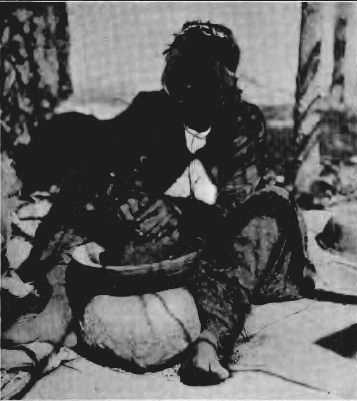
MARIA LUGO, POUNDING ACORNS AT CAHUILLA, SHOWING THE KA-KA-WOHL OR ACORN MORTAR
|
naturally an aristocrat and a leader.
She and her son both have a dignity
which would impress any one who
could see below the Indian exterior.
A short time ago a high dignitary of
one of the churches wrote a letter to
the press, stating that these people
were suffering for want of the necessaries of life. It might have done the
reverend bishop good had he seen the
indignation of this woman and her son
when they were told what had-been
said of them and their people. They
repudiated the idea that they or any
of the Indians of Southern California
needed help from the white man. All
they asked was that they be left alone
and given a fair chance, and they were
quite capable of caring for. themselves. The same things were said at
Cahuilla, where I went around and
visited every “kish” or house, in the
village. With the exception of three
sick and crippled persons, there was
not one who did not resent the imputation of incapacity to provide all that
was necessary for the proper sustentation
of life.
The design of Merced’s basket is
the spider-web pattern, a pattern
largely popular with the Hopi people
of northern Arizona, and found on
many of the baskets used for holding
the sacred meal in their snake dance,
which is now one of the best known
of all Indian ceremonials.
When I asked Merced for the meaning
of the of the design, she said that in the
long time ago her people lived where
there was little or no water. They
prayed constantly for rain, but before
their prayers were uttered they sought
to gain the favor of the Spider Mother,
who made all the clouds, and they
wove the representation of the spider
web in their baskets for that purpose.
When I told her that, prior to the
Hopi snake dance, the Antelope priest
goes, with sacred meal and bahos
(prayer sticks), to the shrine of the
Spider Woman and their prays and
sprinkles the sacret meal from one of
these baskets and deposits the bahos,
she said:
“Perhaps they (the Hopi) all same
as my people long ago.”
To attempt to describe the different
kinds of weaves in this article would
be impossible. In spite of the ridiculous
assertions sometimes made, that
there are only two styles of weave, I
must again affirm, as I have done elsewhere,
that he who imagines Indian
basketry is so simple and primitive an
art is far too ignorant to white upon
the subject. In my small book I have
let experts tell what they know about
it, and, as Dr. Hudson says of the
Pomas alone, they have nine kinds of
weave still in use and four that are
obsolete, and as many more kinds can
be found in the widely diverse basketry
of the southwest.
Another most interesting thing in
connection with basketry should not
be overlooked, and that is that the
materials used depend almost entirely
upon the natural growths of the countries
in which the various weavers
live. For instance the Pomas find a
beautifully colored and tough, durable
wrapping splint from the root of the
slough grass. The Cahuillas, on the
other hand, not having this particular
grass root, substitute the root of the
tule. In Arizona, however, the outer
husks of the various yuccas have to
answer for this same purpose. In
Japan the bamboo is used, in Maine
the sweetgrass, and so on. Hence
there is to be gained from the study
of Indian basketry a knowledge of
techno-geography that in itself is
highly instructive and interesting.
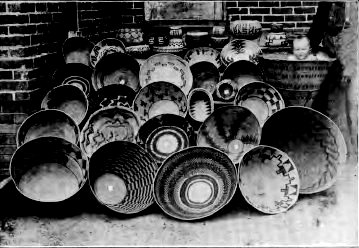
CAHUILLA BASKETS MAINLY FROM THE COLLECTION OF DR. C. C. WAINRIGHT AT
THE TULE RIVER AND MISSION INDIAN AGENCY
|
About the Author
Bibliographical Information
George Wharton James (1858-1923),
“Basket Makers,”
Sunset 8(1):2-14 (November 1901).
Illustrated. 28 cm.
In 1907 George Bryon Gordon acquired the
Fred S. Plimpton California basketry collection
for the University of Pennsylvania Museum of Archaeology and Anthropology,
Philadelphia.
Converted to HTML by Dan Anderson, October 2007,
from a microfilm copy at the California State Library
and a digital copy from University of Michigan.
These files may be used for any non-commercial purpose,
provided this notice is left intact.
—Dan Anderson, www.yosemite.ca.us
http://www.yosemite.ca.us/library/basketmakers/
















